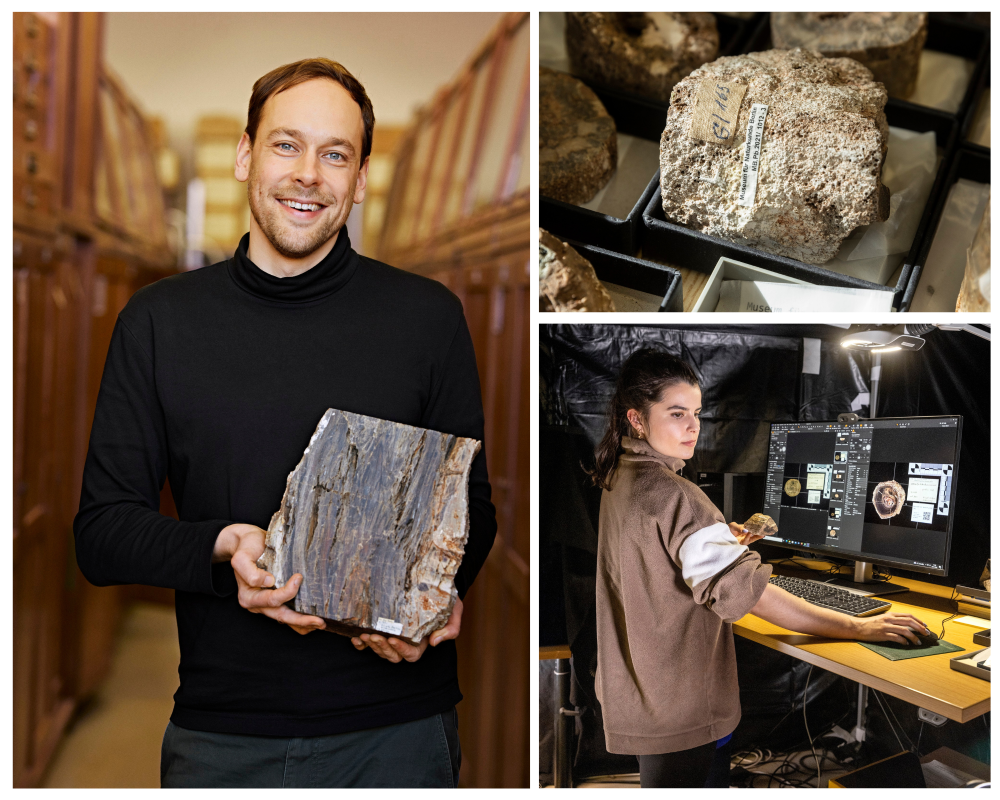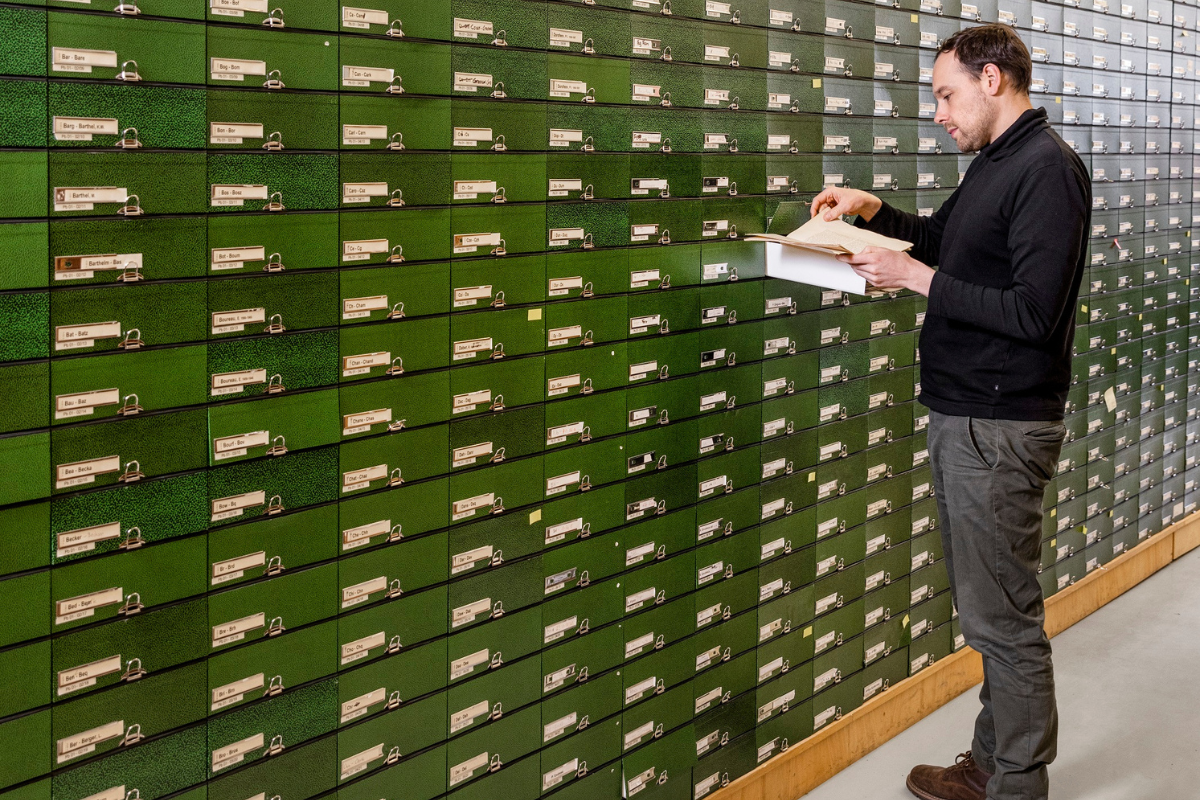Where the city of Chemnitz is located today, there used to be a volcano. When it erupted, it buried a forest underneath it. Ludwig Luthardt, a palaeontologist at the museum, explores the fossilised wood - and can thus reconstruct the climate.
Behind the steel door of an old industrial building opens a huge hall full of cupboards, showcases, shelves. Inside are the estimated 300,000 collection objects of the Palaeobotanical Collection. Ludwig Luthardt, collection scientist at the Museum für Naturkunde Berlin since 2021, gives us a warm welcome. Our eyes immediately wander to the large fern prints in an old cabinet display case.
Luthardt explains that there are about 9,000 types and originals in these cabinets. These are the fossils on which either the species has been described (type specimens) or which are documented by pictures in publications. Because the objects are so important for research, they are soon to be digitised as part of the collection cataloguing and development of the Future Plan. "We are not able to comprehensively develop all palaeobotanical objects, i.e. to inventory and photograph them, within the framework of the museum's future plan. So we select the sub-collections that need a high level of cataloguing because they are historically valuable or particularly relevant to research," says Luthardt. "In parallel, we record the other parts of the collection, decipher illegible labels and search for relevant information in inventory books."
For Luthardt, the 291-million-year-old petrified wood from Chemnitz is relevant to research. He wants to work scientifically with the digitised specimens. That is why they are now being digitised in a black tent at the end of the room. Scan operator Margot Belot carefully takes a small fernsamer stem out of the collection box.
First, a so-called Nuri label is assigned, which is the digital identification tag. Using a barcode scanner, the object appears in the database. Then the stem is photographed. First the ground surface, by placing the object together with a scale on a glass plate under which a camera is mounted. To document the length of the stem, it is placed in a sand bath and photographed from the side together with the scale. When all quality standards have been met, the data package goes into the data portal. The logs will be available worldwide in the data portal in a few months. And hopefully Luthardt will be able to solve his research questions.

Where the city of Chemnitz is today, there used to be a volcano that buried an entire forest when it erupted. Over millions of years, silicic acid replaced the organic material. The woods petrified. But not only them, but an entire ecosystem was preserved. Luthardt is not the first palaeontologist to research this. Bernhard von Cotta already described fossil plants 200 years ago. But science developed further and taxonomic revisions became necessary. Because the fossils are preserved in three dimensions, Ludwig can also reconstruct entire plants, from root to leaf tip. In the microscope, the silicified wooden vessels can be seen in detail. From this, a researcher can deduce how much water the plants evaporated - and from that, in turn, how much CO2 was in the atmosphere.
By examining the fossilised plants, it is therefore possible to reconstruct the climate around 290 million years ago. This important research question is a driving force behind the collection development. There is still a lot of work ahead for the team, but here you can sense drive and enthusiasm. "For me, it's about people understanding how the interrelationships on Earth work, what control mechanisms the Earth has and how it can counteract them. You don't learn that in school, we researchers have to explain that to our fellow human beings."
